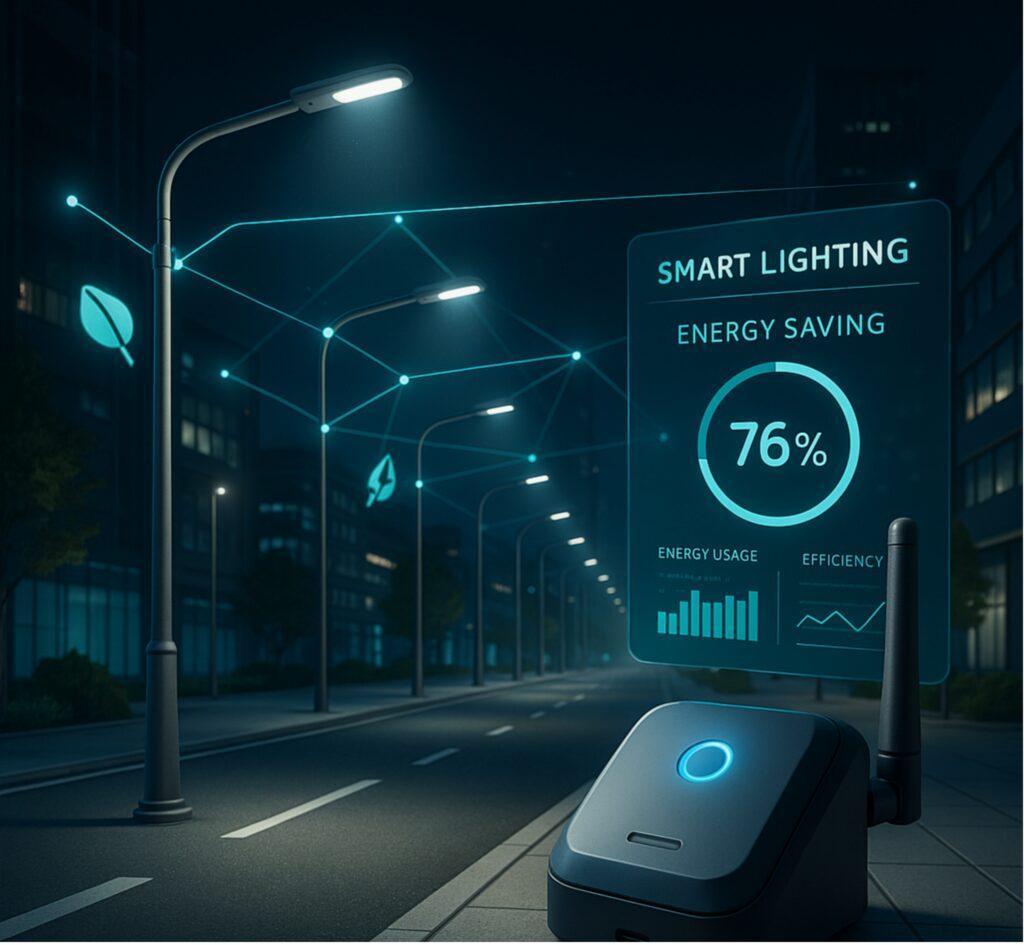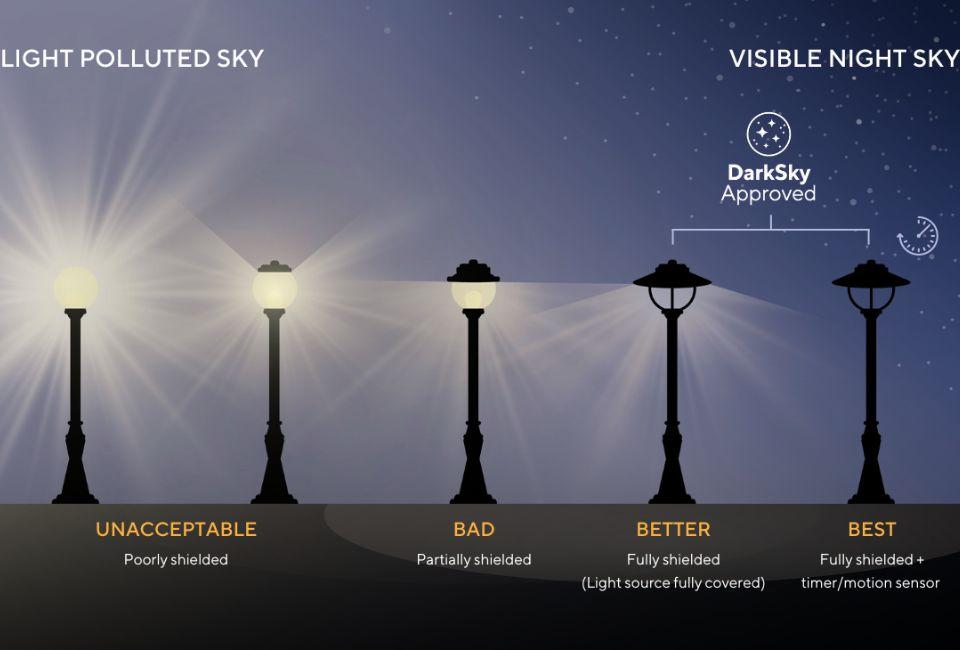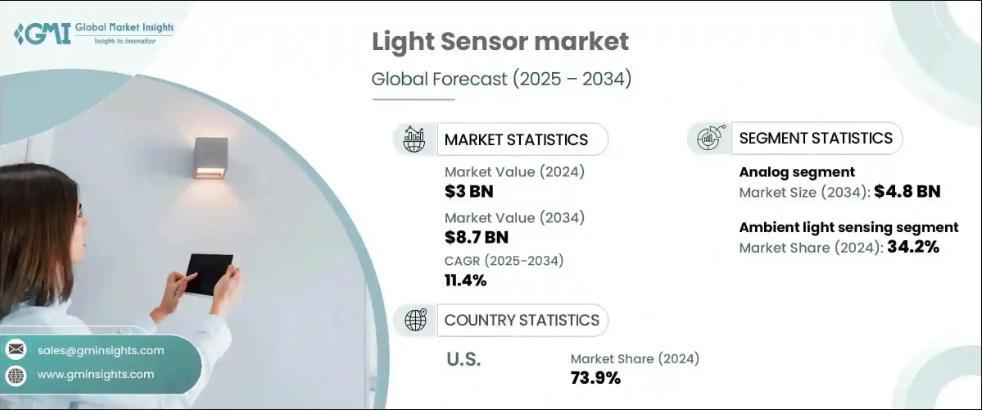Outline
- Introduction
- How Is the Global Lighting Control Market Evolving Toward 2034?
- What Are the Key Industry Trends Shaping Photocontroller Innovation?
- How Do Our Street Light Controllers Compare Against Industry Standards?
- In Which Application Scenarios Do Smart Photocells Deliver Maximum Value?
- What Professional Recommendations Can Enhance Project Success?
- Why Partner With LongJoin to Drive the Future of Intelligent Lighting?
- Final Words
The global light sensor market is on a rapid growth path. In 2024, it reached $3 billion. Forecasts show strong expansion ahead. Advances in miniaturization and sensitivity are fueling adoption across smart lighting and automation.
Within this growth, smart photosensors stand out as key enablers. They combine high precision sensing, multi-protocol communication, and reliable performance. For lighting professionals, understanding how these devices compare to standard products is crucial.
This article explores market trends, technical advantages, and practical applications of advanced smart photocells.

Image Courtesy: GMI
How Is the Global Lighting Control Market Evolving Toward 2034?
Automation-driven energy efficiency and data-driven infrastructure have made smart cities opt for sensor-based systems. Industrial IoT devices now depend heavily on precise light sensing. This shift is fueling strong market growth. Here is a factual preview.
- The CAGR of 11.4% from 2025 to 2034.
- By 2034, it could hit USD 8.7 billion.
Technological Drivers
- Miniaturization is shrinking sensor size while boosting performance.
- Higher sensitivity is now essential. It ensures accurate ambient light detection across varied environments.
- Multispectral integration is expanding use cases. Sensors now detect beyond visible light. Applications include gesture control, monitoring, and advanced automation.
Why Smart Photocells Matter
Because they are transforming lighting. How?
- They deliver high-precision sensing for responsive control.
- They enable multispectral detection for richer data.
- They support multi-protocol compatibility, connecting smoothly with IoT platforms.
That means they integrate seamlessly into smart lighting and city networks. They are no longer optional. They are critical enablers of modern lighting and smart infrastructure.
Here is a table showcasing the regional light sensor market growth from 2024 to 2034.
| Region | 2024 Market Share | CAGR (2025–2034) | Key Growth Drivers |
| North America | 28% | 10.5% | Smart cities, infrastructure renewal |
| Europe | 24% | 9.8% | Energy efficiency regulations |
| Asia-Pacific | 38% | 13.2% | Rapid urbanization, smart lighting |
| Latin America | 6% | 11.0% | Public safety, commercial projects |
| Middle East & Africa | 4% | 12.1% | Smart infrastructure, mega-projects |
What Are the Key Industry Trends Shaping Photocontroller Innovation?
High Precision & Multifunctional Sensing
Demand for sensors that are more accurate and reliable is intensifying. Modern photo switch sensors now offer swift ambient light detection and low false-trigger rates. They support multispectral detection, enabling richer sensing for lighting and automation systems.
IoT & Smart Integration
Photoelectric sensors are no longer simple switches. They network via IoT protocols discussed in the table below. This lets fixtures become smart nodes. Their primary tasks include
- Sending data
- Alerts
- Enabling remote control
Standardization & Interoperability
Standards matter. Zhaga Book 18 defines a plug-and-play interface for photocell modules and communication nodes. It ensures cross-brand compatibility and simplifies upgrades and maintenance. UL773, DALI, and CE/ISO standards bolster safety and global acceptance. Zhaga’s open ecosystem helps cities avoid vendor lock-in.
Here is a table outlining the timeline for photocell technology evolution.
| Period | Key Focus Features | Market Adoption Examples |
| 2010–2015 | Basic dusk-to-dawn switching | Residential outdoor lighting |
| 2016–2020 | Improved sensitivity, weatherproof | Municipal street lighting |
| 2021–2024 | IoT-ready, protocol diversity | Smart city pilots, industrial facilities |
| 2025–2030 (proj.) | AI-based predictive sensing | Large-scale smart infrastructure |
| 2031–2034 (proj.) | Fully autonomous adaptive systems | Smart grids, integrated energy platforms |
How Do Our Street Light Controllers Compare Against Industry Standards?
Our light sensor switches outpace typical industry products on certification, performance, reliability, and portfolio breadth.
Certification & Compliance
Our photocells achieve full compliance across major safety and interoperability standards:
- UL 773 / UL 773A, ensuring safety in photoelectric switch design and use.
- CE and ISO certifications, confirming global market readiness.
- Zhaga Book 18 and Zhaga-D4i compliance, enabling plug-and-play modular use in smart luminaires.
Communication Protocol Flexibility
Our LED street light photocell supports seamless integration via both NEMA and Zhaga interfaces. This enables compatibility with legacy and modern control modules.
Enhanced Performance & Sensor Reliability
We deliver high-precision sensing, fast response, and low false triggers with features like:
- Built-in MOV-based surge protection rated up to 460 Joules / 10 kA.
- Automatic aging or zero-cross compensation ensures stable performance over time.
Durability & Weather Resistance
Our products are built for harsh environments with:
- IP65 to IP66-rated housings, offering dust and water resistance.
- Surge protection up to ANSI C62.41 levels (6 kV/3 kA) is built into enhanced bases.
- UV-resistant, UL-defined materials, and IK09 impact resistance in connector modules.
Expanded Product Portfolio
We offer a full suite of form factors:
- Twist-lock photocells compliant with ANSI C136.10 and UL 773.
- Wire-in button and stem photocells, with UL, CE, and ISO compliance and optional surge protection.
- Zhaga sockets and intelligent connectors for modular mounting and smart control modules.
In Which Application Scenarios Do Smart Photocells Deliver Maximum Value?

Smart City Street Lighting
Smart street light sensor plugs into NEMA or Zhaga sockets. They connect streetlights to management platforms using wireless IoT. Cities gain real-time control, energy monitoring, diagnostics, and even firmware updates. Some deployments report up to 70% savings in energy and maintenance.
Roadway and Landscape Lighting
Dusk-to-dawn photocell switches lights automatically based on ambient light. They keep illumination consistent while cutting wasted power. Features like midnight dimming reduce light pollution. Landscapes, gardens, and pathways stay lit without manual effort.
Commercial Buildings
Smart photocell light switches add surge protection and built-in diagnostics. They detect lamp failures and guard systems against electrical spikes. Their rugged, weatherproof housings ensure stable operation even in tough conditions. Maintenance trips and downtime are minimized.
Outdoor Lighting Automation & Security Integration
Smart photoelectric sensors connect with security systems and motion sensors. They trigger adaptive lighting scenes that improve safety. Solar streetlight systems combine photocells with motion sensors and IoT protocols. These features optimize energy use while linking lights directly to smart-city clouds.
What Professional Recommendations Can Enhance Project Success?
1. Prioritize Certified Photocells
Select photosensors that support multiple communication protocols. Multi-protocol support offers vendor freedom and keeps infrastructure future-ready.
Always choose fully certified units. Ensure the product has all or some of the certifications listed in the table below.
2. Sensor Selection
High-accuracy sensors provide stable dusk-to-dawn control. Phototransistor or filtered silicon designs deliver a reliable response with minimal drift.
Switching precision is critical. Zero-cross detection reduces relay arcing. This extends device life and lowers maintenance needs. Systems rated for more than 10,000 on/off cycles are recommended.
3. Focus on Durability Features
Outdoor lighting faces voltage surges, weather, UV, and extreme climates. Photocells with MOV-based surge protection—20 kV/10 kA—dramatically cut failures and repair visits.
Units should have strong environmental sealing. This includes:
- IP66 or higher ratings to ensure dust and water resistance.
- Flame-resistant.
- UV-stable materials to extend lifespan in sun-intense environments.
4. Get Controllers with Remote Dimming and Scene Switching
Remote dimming reduces wasted energy. Programmable scene control adapts lighting to traffic or weather. Smart photocells tied to IoT platforms provide real-time adjustments, fault alerts, and automated savings.
Controllers that support TalQ compliance fit seamlessly into city-wide management systems. This ensures smart streetlights work smoothly inside broader urban frameworks.
Here is a table of the photocell selection checklist.
| Selection Factor | Why It Matters | Recommended Standard |
| Certification | Ensures compliance and safety | UL773, CE, ISO |
| Communication Protocols | Guarantees system integration | LoRa, ZigBee, NB-IoT, WiFi |
| Sensor Accuracy | Prevents false triggers | High sensitivity response |
| Durability | Reduces outdoor maintenance failures | Surge protection, IP65+ |
| Smart Control Features | Enables advanced automation | Remote dimming, scene switch |
Why Partner With LongJoin to Drive the Future of Intelligent Lighting?
Choose us for smarter, safer, and future-ready lighting systems.


Compliance & Interoperability
LongJoin delivers fully certified components ensuring safety and global compatibility. Zhaga compliance enables plug-and-play modules. This reduces supply-chain risk and streamlines upgrades.
Performance & Energy Efficiency
Our smart photocells adapt light output dynamically. They cut energy use by up to 70%. They also optimize lighting based on real-world needs, so you save both power and money.
Durability & Cost Savings
Our modules reduce maintenance rates by nearly 50%. You replace only the module—not the full fixture. That translates to lower costs and longer asset life. Zhaga’s modular design also cuts e-waste and keeps systems updatable.
Seamless Integration & Future Proofing
Light photocells form the foundation for complete smart city ecosystems. With IoT-ready interfaces, they integrate effortlessly with city-wide platforms. Flexible communication options and modular sockets support upgrades without re-engineering.
Final Words
Smart photocells are shaping the future of efficient, connected lighting. Their role spans energy savings, durability, and seamless smart-city integration. For trusted, globally compliant solutions, Chi-Swear offers LongJoin smart photocells designed for reliability and performance—making them a dependable partner for your next project.
External Links
- https://www.gminsights.com/industry-analysis/light-sensor-market
- https://www.zhagastandard.org/books/overview/smart-interface-between-outdoor-luminaires-and-sensing-communication-modules-18.html
- https://www.dali-alliance.org/
- https://single-market-economy.ec.europa.eu/single-market/goods/ce-marking_en
- https://www.iso.org/standard/62085.html
- https://www.nema.org/
- https://www.ansi.org/






